Upfront cost and range are key factors when buying an electric vehicle (EV), but spending hours waiting to charge your EV is another major roadblock on your way to EV ownership. It’s one of the most common questions I hear from non-EV owners, “how long does it take to charge?” What if we could recharge an EV battery in less than 10 minutes? Would that change your mind? Well, there’s some interesting battery advancements from companies like Battery Streak that may be making this dream a reality sooner than you think.
Let’s face it. Electric cars still aren’t cheap enough, mostly due to battery manufacturing costs, but that’s changing quickly. According to Bloomberg, the cost of a lithium-ion battery pack dropped by 89% over the last 10 years, reaching $132/kWh in 2021.1 By 2023 battery costs are expected to approach the $100/kWh threshold, at which point EV prices will be on par with fossil-fuelled cars.2 A high price tag isn’t the only thing suppressing EV enthusiasm. You might have heard about range anxiety, right? Apparently, it’s a pretty common condition for potential EV buyers. 50% of them won’t get an EV just because they’re afraid of not making it to the next charging station or perhaps waiting there for hours while charging their car.3 But is this fear grounded in actual facts? Battery energy density has nearly tripled over the last 10 years.4 This means your EV battery can now store much more power per unit of volume/weight, which gives you a longer range. To be more specific, the median range of EVs sold in the US in 2020 hit the 250-mile mark, which is 4x higher than what you could get in 2011.5 However, if you’re planning a long road trip, you’ll have to do a pit-stop at some point. From my personal experience with my Tesla Model 3, my car is typically charged up and ready to go in the time it takes for me to stop and grab a bite to eat. No big deal. As fast as that is, it’s still not on par with filling a tank with gas. The trouble is that fast chargers still aren’t as plentiful as they need to be, or as fast as people want them to be.6 But things are changing fast…or should I say charging fast.
Last October, Desten7 boasted of having an ultra-fast battery that could go from flat to full in 4 min and 40 seconds.8 That’s what I call a lightning charging speed. Talking battery jargon, this would be somewhere in between a 10C and a 20C charging rate.9 A C rate is the amount of current flowing into the battery while charging. The faster the current, the higher the rate, the lower the time needed to charge up the battery. Having said that, the Chinese company hasn’t disclosed much about their secret sauce behind their ultra-high charging rate yet. But someone else showed another streak of clarity on their fast charging tech…a longer-lasting battery that recharges in only 10 minutes without overheating. Before we can investigate these claims, let’s zero in on what’s slowing down fast charging.
What’s slowing down fast charging?
I don’t want to add to your range anxiety, but there are still some pressing challenges to solve before EVs charging could rival a gas tank’s refueling time. The fastest chargers available today are called level 3 or direct-current fast charging (DCFC) models.10 You can’t install these at home since they work between 400 and 900 V, which is much higher than standard residential electricity.11 The most powerful chargers, operating at 350 kW, can charge a typical long range EV to 80% in about 20 minutes. These DCFC chargers are still pretty rare. You can find them in about 26% of the public charging stations in the US.12 On top of that, 90% of DCFC ports across the US network operate below 300 kW13. So, why’s that? Mostly because they’re too expensive to roll out. For example, you’d need $150,000 to install a 150-kW charger. Besides infrastructure costs, heat is another hot topic for fast charging. That’s because it can cause dangerous side-effects. When you send too much current through the charging cables and the battery’s internal cell, you’ll have more energy lost as heat because of the resistance encountered along the way. As a result, the battery liquid electrolyte may boil off, which builds pressure inside the cell. This process, called swelling or gassing14, could lead to ruptures or even explosions.15 Not to mention the battery cables becoming piping hot. Some researchers16 came up with an innovative cooling method that lets battery cords handle 5x the current of a Tesla Supercharger.17 However, that’s still an early-stage prototype.
Another key hurdle to overcome is to find more efficient raw materials for the battery anode. In a commercial battery, this is typically made of graphite. So, what’s wrong with it? Basically, while charging, a cloud of lithium ions, a.k.a. concentration gradient, shuttles from the cathode towards the anode. Once they reach the negative pole, ions nestle in the space between graphite layers. This process, a.k.a. intercalation18, becomes messy as you increase the current intensity. Instead of diffusing inside the graphite matrix, ions lay onto its surface and form a metallic plate.19 That’s widely known as lithium plating. This lithium metal barrier prevents further ions from accessing the graphite internal structure. Which means your battery won’t recharge. So, what do we do? One way to sort this out would be to charge the battery at higher temperatures, like 60°C (140F).20 However, heating up the battery shortens its life. When increasing the charging temperature of a lithium-ion battery from 25°C (77F) to 55°C (131F), researchers found a graphite anode degrades up to 8x more over 50 cycles.21 22 Ultimately, this bites into your battery lifespan. In other words, it’s a vicious circuit. Researchers found a way to address this issue by exposing the battery to 60°C (140F) only for a brief period of time,23 but that was only at bench lab scale. Alternatively, we could reengineer the anode design to minimize overheating when fast charging. That’s what Battery Streak has done.
Charging batteries like a streak
Last October, CBMM, a world leader in niobium products, acquired 20% of the startup, Battery Streak.24 Thanks to the Brazilian investor, the US-based company will develop their niobium-containing anode technology. This will let your battery achieve an 80% charge in only 10 minutes. The company also claims their innovation could make batteries safer due to their methods of controlling the heating during charging. Based on their testing, when charged at a 6C rate at ambient temperature their battery generated a thermal gradient of only 8°C/14°F.25 This is a much lower heat generation compared to a commercial lithium-ion battery like Panasonic NCR18650PF, which can have an average temperature rise of ca. 27°C/49°F when charged at a 4C rate.26 So a lower charging rate, but a higher temperature. Besides an improved user experience, their technology could help a lot with a battery pack’s thermal management. This could translate into an optimized battery design and lower costs for manufacturers. I had a chance to talk to Battery Streak VP Marketing, Dan Alpern, to ask for further insights.
“I think there will be companies that are reluctant to dismiss their thermal management, but I think as we prove our technology and they see that it’s not needed, they’ll start saving more space and we’ll see an increase in energy density by not having to have so much equipment and a harness for thermal management.” – Dan Alpern
That’s not the only perk battery producers will get from using Battery Streak’s technology. This material can be used in existing manufacturing plants without the need for operational expenditures. Think of the benefits for battery giants like Panasonic, CATL, Tesla and others, which can license Battery Streak technology and use it on their massive production facilities without much effort.
“One of the great benefits of our material is that there’s going to be 0 cost for them to switch to our technology. This material can be used on existing lithium-ion battery lines with today’s equipment.” – Dan Alpern
“There’s no need to retool or create a new factory to handle this. How the process works is they just need to clean everything off from the old batch before they start with our material.” – Dan Alpern
Besides a greater safety for users and potential cost savings for battery producers, Battery Streak touts a high coulombic efficiency (CE) among its tech advantages. As a side note, CE is basically the ratio between the charge you get out of the battery and the charge you put in over a charging/discharging cycle.27 Their battery will retain 80% of its capacity after 3,000 cycles, which would outperform Tesla’s current batteries at around 1,500 cycles.28
“Our testing has shown that we’re getting to 3,000 cycles at eighty and we’ve gone as far out as 9,000 cycles to 60. So what’s really interesting about it is that this material has a very linear and predictable progression.” – Dan Alpern
So, what’s their…streak…er trick? It’s called Niobia29, which is their patented material. This is based on niobium oxide and has a nanoporous structure. Thanks to its tiny pores, Niobia has an extremely large surface area per unit of volume. This is the key point, where the magic happens. Instead of intercalating within the anode matrix, lithium ions link to Niobia’s surface through electrostatic forces. Doing so, lithium-ions have to travel over a shorter range.30 Plus, you don’t have any heat-releasing31 chemical phase transitions that typically occur during the intercalation process.32
“Our nanostructured material process allows batteries to charge without a chemical phase change.” – Dan Alpern
In other words, Niobia charges more like a capacitor rather than a chemical battery. Combine all these together and you have faster and safer charging, all thanks to niobium. You may have heard a lot of buzz around companies using other anode components like silicon, but why haven’t we heard much about niobium?
“For the first time publicly last week I presented our technology at NAATBatt International. So for a long time, we haven’t been talking to too many people about this technology. So I think that’s probably why there hasn’t been the buzz you mentioned about silicon and other types of technologies.” – Dan Alpern
It sounds like we’re going to hear more on niobium in the future. Unlike critical minerals such as nickel and cobalt33, the niobium supply chain seems to be less prone to disruptions. Based on what Dan said, Battery Streak has clearly been looking into future proofing their supply chain.
“We’ve had a Mckinsey study done to look at projections both on the markets themselves and the availability. CBMM, our partner, has no concerns about the future supply and they’re ready to ramp up production and ship mega tons of material out as soon as we deliver the customer base with our technology. I also mention that we received an NSF grant. We’re currently working on a cobalt-free cathode and so that’ll help with our next generation battery.” – Dan Alpern
That sounds reassuring, but where is Battery Streak at with their tech development?
“Our technology is out of the lab. We are working with prototypes, we are doing product demonstrations and testing with our future customers and partners.” – Dan Alpern
“We have a long line of potential customers that are ready to accept test cells and validate our technology, and that’s what we’re looking at for the next six to twelve months.” – Dan Alpern
Battery Streak shared some pictures of the sample they’re sending to their partners for verification. As you can see, the battery tabs are much larger than the normal ones. This is because they handle a higher amount of power.
“We’re doing 2 things right now. We’re using aluminum instead of copper and we’re using the wider tabs to handle the higher current.” – Dan Alpern
I can hear you already. Where’s the catch? Well, just like anything else, Battery Streak tech isn’t the perfect solution across the board. I’m going to hold Dan to one of them…
“We have a little less energy density than some of the top battery technologies, maybe 20% less.” – Dan Alpern
So there is a tradeoff in energy density to get the benefits of lower heat and longer cycle life. Looking at the wider picture, another challenge for commercializing this technology is charging infrastructure. As stated by the company, they’ll need a 500-kW charger to provide a 60-kWh car with 20 miles per minute,34 which isn’t a thing yet. We’ll need substantial investments to make it happen. As for the cost and progress of their production scale-up, I picked Dan’s brain for more details.
“Our financial people are still running the numbers on what the final costs are going to look like when we get to a full production. We’re currently in that process right now. We have new reactors coming. We’ll increase our production from hundreds of grams of material a day to over four kilograms a day. So that’ll help to give a better answer to this.” – Dan Alpern
I don’t know how long it will take for Battery Streak to reach the market, but their material sounds promising. And the other interesting thing about Niobia is that its applications go beyond the automotive industry. The company is exploring a wide range of use cases, including portable medical devices and industrial robots.35
“For energy storage systems, maybe a hybrid model that will alleviate the peak loading and the harm discharge does to traditional lithium-ion battery systems.” – Dan Alpern
I’d love to have this in my phone.
Who else is leading the fast charge?
The charging speed race isn’t exclusive to Battery Streak. In January 2021 Storedot produced the first ever 5-min charge battery in a factory.36 So again, we’re not talking about lab stuff. The Israeli company churned out 1,000 batteries in a manufacturing facility in China. According to the Storedot website37, their extreme fast-charging (XFC) battery prototype can give you a 17 miles per minute charge capability and they’re expecting to scale this up to 25 miles per minute by 2028. Just to give you some perspective, this is higher than the target suggested by the Department of Energy (DOE) in a 2017 study to enable fast charging38 and it’s also higher than what fastest commercial chargers could currently deliver.39 IStoredot didn’t give out many details on their battery working conditions. The company said their Flash Battery will need much more powerful chargers than those used today to deliver their 5-min promise,40 but they haven’t specified how powerful. As mentioned earlier, that’s a key detail. Also, they reported a 70% capacity retention after 1,700 cycles41, which doesn’t improve the durability of current Tesla cars or beat out Battery Streak’s tech.42 43 44 45 46
Tesla is also on the fast charging path too. The EV pioneer is developing Tesla Silicon for their new fast charging batteries anode.47 According to Applied Materials’ Managing Director Jim Cushing, a 30% silicon loading in a battery anode would deliver a 4C charge rate, which means going from 0 to 100% in 15 minutes. So, what’s so special about silicon? This material has a greater potential than graphite of reducing lithium plating.48 49 When you incorporate silicon in the anode graphitic matrix, lithium ions will find more space to go through. Silicon could potentially store 10x more energy than graphite50, using it would allow the design of thinner anodes. This means lithium ions will meet less resistance while being carried through the bulk of the anode and will be less prone to pile up over its surface.51
Nevertheless, silicon isn’t hassle-free. During charge and discharge cycles, silicon can undergo drastic expansion and contraction, causing stresses in the electrode. These stresses will ultimately lead to its failure.52 53 54 It’s something all companies using silicon have to find ways to accommodate.
Fast charging forward
Using more efficient materials and designs, companies are working out some of the fast charging kinks. Having more range in less time would translate into smaller batteries and less charging stations to be built, thus…short-circuiting…the perceived EV user experience downside. However, none of the ultra-fast charging batteries have reached the market yet. On top of that, our current charging infrastructure isn’t exactly ready for it. That’s why it’ll still take time and money to reduce our range anxiety level.
- “Battery Pack Prices Fall to an Average of $132/kWh, But Rising ….”↩
- “Exclusive: Tesla’s secret batteries aim to rework the math for electric ….”↩
- “Electric car range and 5 reasons why your range anxiety is ….”↩
- “BloombergNEF: Lithium-Ion Battery Cell Densities Have Almost ….”↩
- “The Median Range Of Fully Electric Vehicles Exceeded 250 Miles In ….”↩
- “Alternative Fueling Station Locator.”↩
- “Desten.”↩
- “China REVEALED Batteries That Charge Faster Than Gasoline I ….”↩
- “What Is A Battery C Rating & How Do I Calculate C Rate – Power Sonic.”↩
- “How battery storage can help charge the electric-vehicle market.”↩
- “What Are The Different Levels Of Electric Vehicle Charging? – Forbes.”↩
- “Alternative Fueling Station Locator.”↩
- “FOTW #1210, November 1, 2021: Sixty Percent of Electric Vehicle ….”↩
- “Insight into the Gassing Problem of Li-ion Battery – Frontiers.”↩
- “Why Some Lithium-Ion Batteries Explode | Live Science.”↩
- “Experimental investigation of subcooled flow boiling in annuli with ….”↩
- “Can Super-Fast Battery Charging Fix the Electric Car? | WIRED.”↩
- “How Does Intercalation Work in Batteries? – News about Energy ….”↩
- “Lithium Plating in Lithium-Ion Cells – NASA.”↩
- “Asymmetric Temperature Modulation for Extreme Fast Charging.”↩
- “Effect of Temperature on the Aging rate of Li Ion Battery Operating ….”↩
- “Solid Electrolyte Interphase – an overview | ScienceDirect Topics.”↩
- “Asymmetric Temperature Modulation for Extreme Fast Charging.”↩
- “Niobium company CBMM to acquire 20% of startup Battery Streak.”↩
- “Battery Streak and CBMM unite to push niobium technology for ….”↩
- “Research on the Thermal Characteristics of an 18650 Lithium-Ion ….”↩
- “BU-808c: Coulombic and Energy Efficiency with the Battery.”↩
- “Will worn-out batteries send Tesla to the scrapheap? It’s complicated.”↩
- “Battery streak – Niobium.tech.”↩
- “Q&A: Battery Streak to commercialise niobium batteries | Argus Media.”↩
- “Enabling Fast Charging – Battery Thermal Considerations – OSTI.GOV.”↩
- “Li-ion batteries: Phase transition.”↩
- “The US wants to make EV batteries without these foreign metals ….”↩
- “Battery streak – Niobium.tech.”↩
- “Battery Streak Lightning Fast Charging Applications.”↩
- “Electric car batteries with five-minute charging times produced.”↩
- “StoreDot EV FlashBattery.”↩
- “Enabling Fast Charging: A Technology Gap Assessment.” 20 Oct. 2017↩
- “What Are The Different Levels Of Electric Vehicle Charging? – Forbes.”↩
- “Electric car batteries with five-minute charging times produced.”↩
- “STOREDOT, THE EXTREME FAST CHARGING BATTERY ….”↩
- “”StoreDot: Solving the Range Anxiety of Electric Vehicles.””↩
- “”New fast-charging battery promises a full ‘tank’ in five minutes.””↩
- <a href=””h



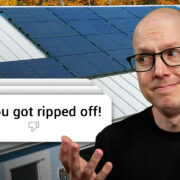
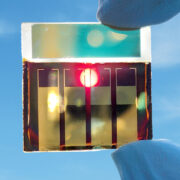
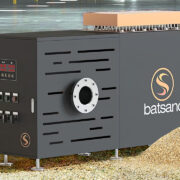
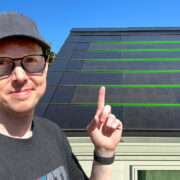
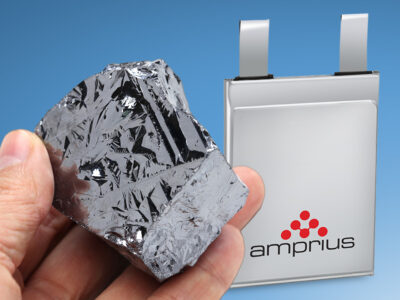

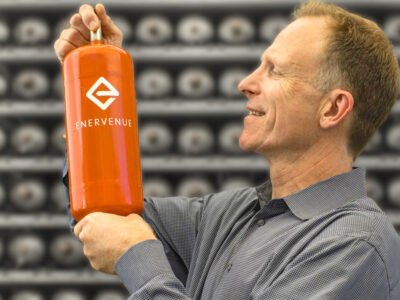
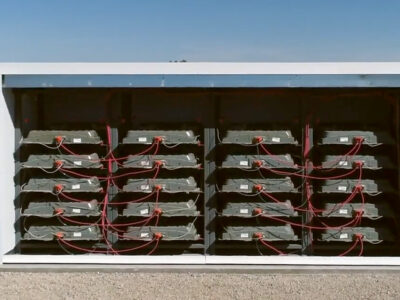


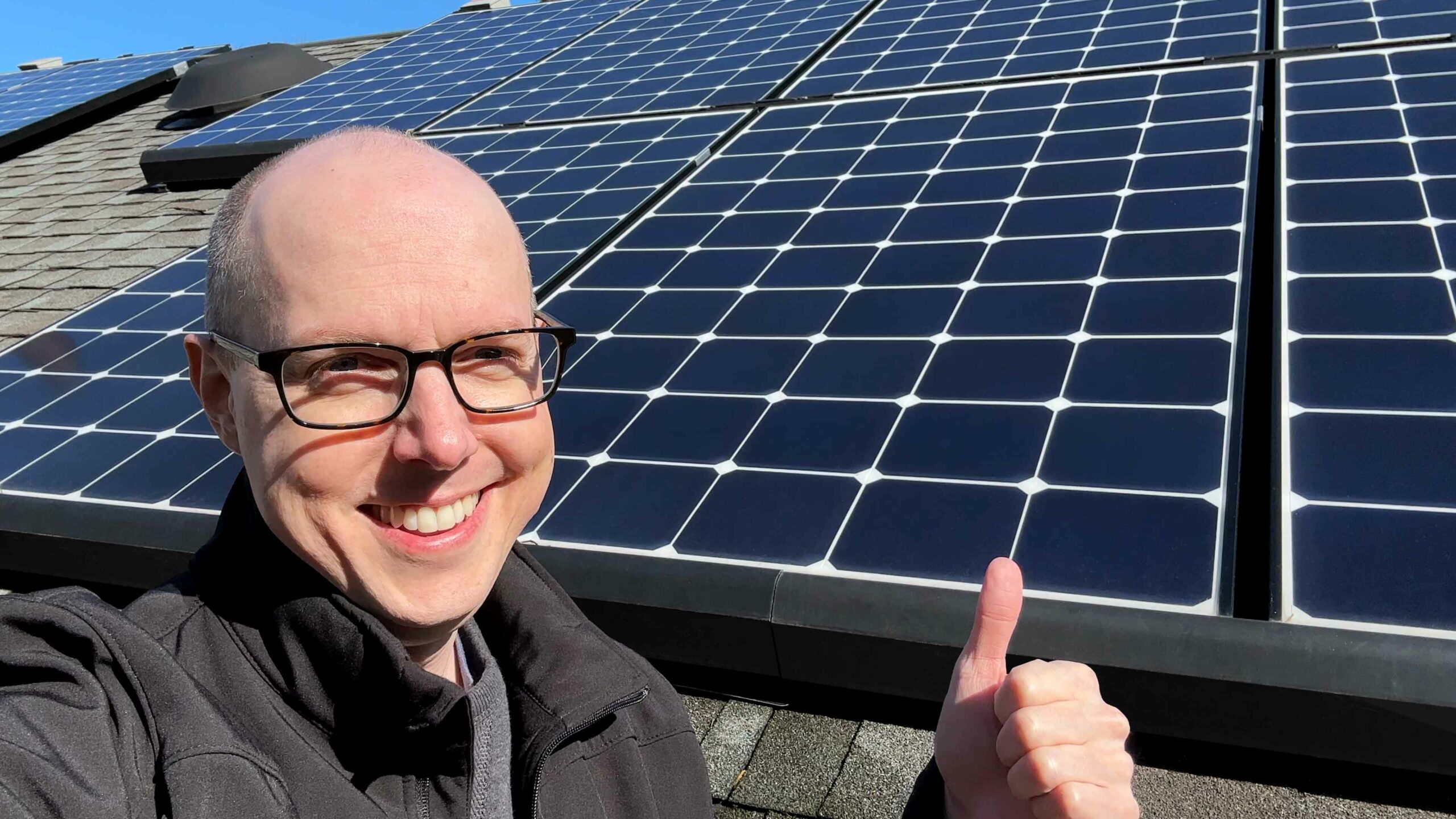
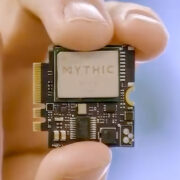
Comments